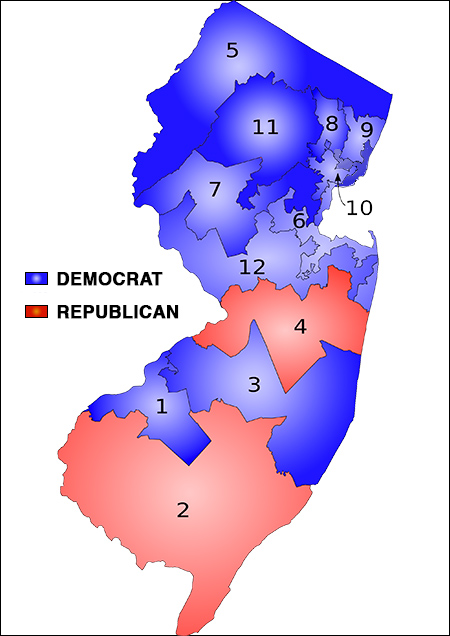By Jim Ellis
 Feb. 23, 2021 — The Daily Kos Elections website staff have just completed the calculations they perform after every presidential election: that is, determining how all 435 congressional district electorates voted for president, and then cross-referencing that result with their US House vote.
Feb. 23, 2021 — The Daily Kos Elections website staff have just completed the calculations they perform after every presidential election: that is, determining how all 435 congressional district electorates voted for president, and then cross-referencing that result with their US House vote.
In the 2020 election, they find that more than 96 percent of the districts voted for the same party’s candidate for President and US House, thus leaving 16 in the “cross-district” category. Nine of the 16 voted for President Biden but then chose a Republican House member. In seven others, the electorates backed former President Trump but reverted to the Democrat’s column for their US House Representative.
The districts that went for Biden for President
and a Republican for House are:
• CA-21: President Biden: 54.4% – David Valadao (R): 50.5%
It’s not a surprise to see this Bakersfield-Fresno district on the cross-district list. When Valadao first represented the seat, the CD was either the first or second-most Democratic seat in the nation to elect a Republican congressman.
• CA-25: President Biden: 54.0% – Rep. Mike Garcia (R): 50.0%
The more extraordinary vote here was Rep. Garcia overcoming a strong Biden vote in a district that has been trending Democratic for the past several elections. Hillary Clinton also won here with a 50-44 percent margin four years earlier. Garcia survived the 2020 election by a mere 333 votes. This district is likely to change significantly in redistricting.
• CA-39: President Biden: 54.1% – Young Kim (R): 50.6%
Republican Kim returned this Orange/LA County seat to the GOP column after a term under Democratic representation. The voters here also went for Hillary Clinton in 2016 with a 51-43 percent spread even while simultaneously re-electing then-Rep. Ed Royce (R-Yorba Linda), 57-43 percent.
• CA-48: President Biden: 49.7% – Michelle Steel (R): 51.1%
The coastal Orange County district somewhat returned to its Republican roots when the electorate swung back to Republican Michelle Steel after electing Democrat Harley Rouda in 2018. Previously, Rep. Dana Rohrabacher (R) held the district, or those with similar confines, for 30 years. President Biden carried the seat by 1.5 percentage points in November, similar to Hillary Clinton’s 2016 margin.
• FL-27: President Biden: 51.3% – Maria Elvira Salazar (R): 51.4%
The congressional vote was the outlier here as this seat was drawn as a Democratic district as part of the state Supreme Court’s mid-decade re-districting directive. Expect the Republican map drawers to improve this seat for freshman Rep. Salazar (R-Miami).
• NE-2: President Biden: 52.2% – Rep. Don Bacon (R): 50.8%
In a significant way, Nebraska’s 2nd District may have clinched the Presidency for Joe Biden. Nebraska is one of two states that split their electoral votes and when this CD went for Biden, opposite from the rest of the state, it made the Trump national victory path very difficult. Rep. Bacon survived another close election in the Omaha metro district, winning here for the third time with 51 percent or less.
• NY-24: President Biden: 53.4% – Rep. John Katko (R): 53.1%
Despite a nine-point win for President Biden in this Syracuse anchored district (53.4 – 44.4 percent), four-term Rep. Katko recorded a 10-point victory in his own right marking the widest swing of any cross-district.
• PA-1: President Biden: 52.4% – Rep. Brian Fitzpatrick (R): 56.6%
In a similar result to that found in NY-24, third-term Rep. Fitzpatrick was again able to swing the electorate hard in his direction and win a comfortable re-election victory despite the opposite result at the top of the ticket.
Continue reading


